1. Flowering Thyme
“For a perennial garden, flowering thyme is such a nice addition because it’s both ornamental and edible,” says Tara Nolan, author of Gardening Your Front Yard. “Plus, even in the winter—assuming it’s not covered in snow—you can grab a few sprigs of thyme to enjoy in your kitchen.” Perhaps in a fancy lemonade!

2. Alyssum
White alyssum is a great way to fill in the areas of your garden that aren’t already populated by plants and flowers. Its heat and drought hardiness make it an obvious choice for tons of different climates.

3. Sedum ‘Dragon’s Blood’
This incredibly hardy plant features a lovely red color—hence the name “Dragon’s Blood.”
“It really does provide year-round interest,” says Nolan. “Even when there’s some snow, you might be able to see the little rosettes. It’s just a really pretty option in any season.”

4. Delosperma (“Ice Plant”)
This low-growing plant features succulent, spreading leaves, and striking flowers that open in the sunshine and close when it’s shadier. “‘Firespinner’ is one of the lovelier varieties,” says Nolan. “It’s this really beautiful blend of orange, fuschia, and white colors.”

5. Black Mondo Grass
Black foliage might not be your first choice, but when you see how beautiful this grass is, you might change your mind. “If you plant a lime green foliage around it, that not only makes the black grass pop; the green foliage also looks even brighter,” says Nolan. “It’s also an evergreen perennial, which means it’ll have visual interest in the winter as well.”

6. Hens and Chicks
The Latin name, sempervivum means “live forever,” which should give you a sense of how these tough, drought-resistant plants hold up. Their common name refers to the way the hen-like plant grows tiny rosettes around its main plant—like a hen caring for baby chicks.

7. Liriope
Commonly known as lilyturf, all four species of these grass-like blooms are perennials. The towering purple buds make an appearance starting in the late summer and into the fall.

8. Lily of the Valley
Consider this one of the easier perennial ground covers, namely because it can bloom in partial shade with moist soil. Bonus: it’s also one of the sweetest-smelling.

9. Spotted Dead-Nettle
Known as Lamium maculatum, this perennial plant is deer- and rabbit-resistant and boasts a lengthy bloom time: from mid-spring to early summer.

10. Creeping Phlox
These blooming beauties come in a variety of colors—white, purples, blues, and pinks—and won’t grow taller than six inches

11. Lamb’s Ear
A cousin to mint that’s also called woolly hedgenettle, you’ll enjoy this plant’s lush, silvery leaves year-round. The purple flowers that bloom come spring are also pretty.

12. Violet ‘Freckles’
This variety of Viola sororia is moderately fast-growing and sports freckled purple flowers in mid-spring. When combined with shade-loving mosses, it creates a woodland effect.
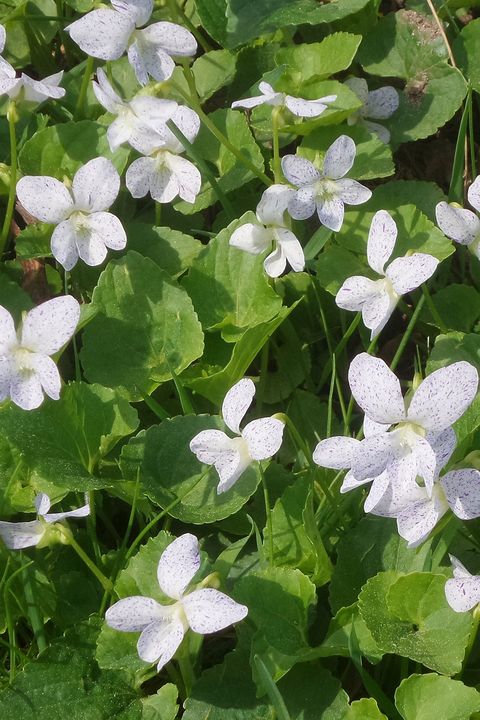
13. Corsican Mint
Tiny pale-mauve blossoms appear in summer on the mint-scented herb Mentha requienii. Ideal for shade, it can also handle some afternoon sun and is easily divided.
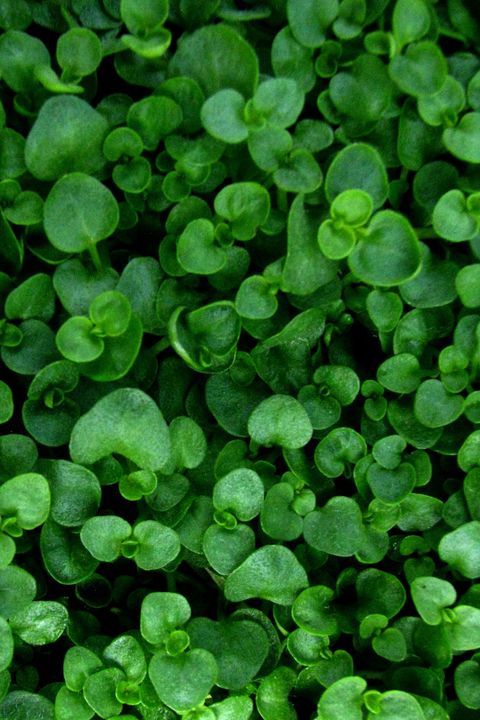
14. Miniature Brass Buttons
The moisture-loving Leptinella gruverican withstand some morning light. It’s an aggressive grower with tiny, pale fernlike leaves and small green-gold flowers in mid-spring.

15. Dianthus ‘Sternkissen’
A variety of the moderately spreading Dianthus gratianopolitanus, featuring blue-green foliage and clove-scented pink flowers. It requires relatively little water.
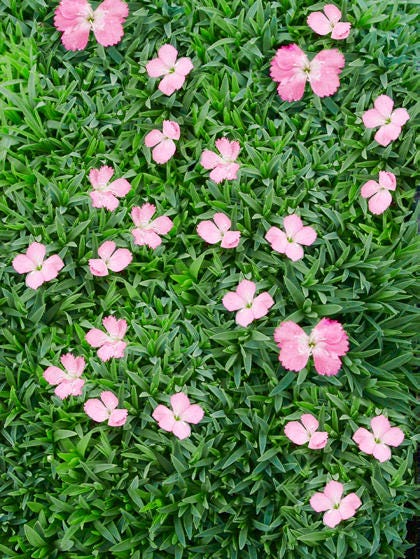
16. Creeping Mazus
The abundant purple flowers of Mazus reptans, also known as creeping blue,bloom in mid-spring and remain through early summer. This drought-tolerant plant can also be grown in full sun.

17. Blue Star Creeper
Easy-to-grow blue star creeper (Isotoma fluviatilis) produces pale-blue flowers that last from spring through early fall. It spreads quickly in filtered light but can also take full sun.
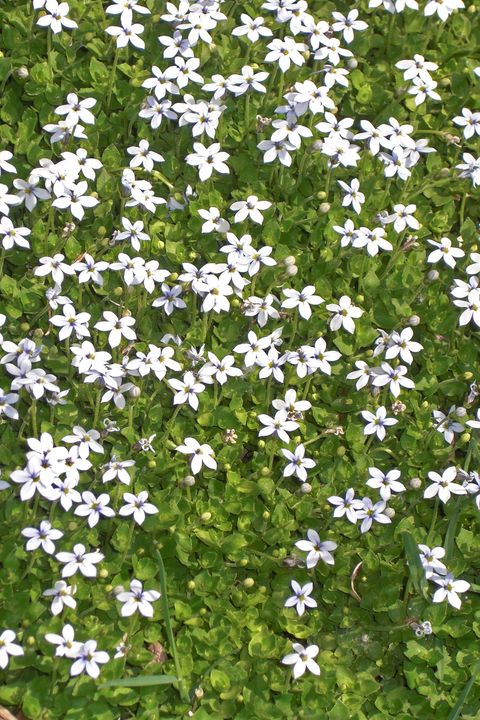
18. Sedum ‘Baby Tears’
The teardrop-shaped, variegated leaves on this drought-tolerant succulent (Sedum album) turned red in autumn. The spikes of white flowers that burst forth each summer are a bonus.
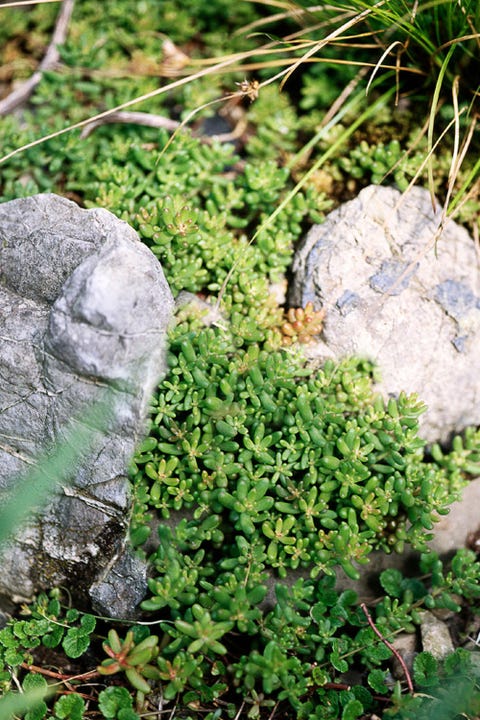
19. Roman Chamomile
Scented Chamaemelum nobile thrives in hot, dry conditions. Cut stems back to two inches from the ground after the plant blooms to maintain its compact form.
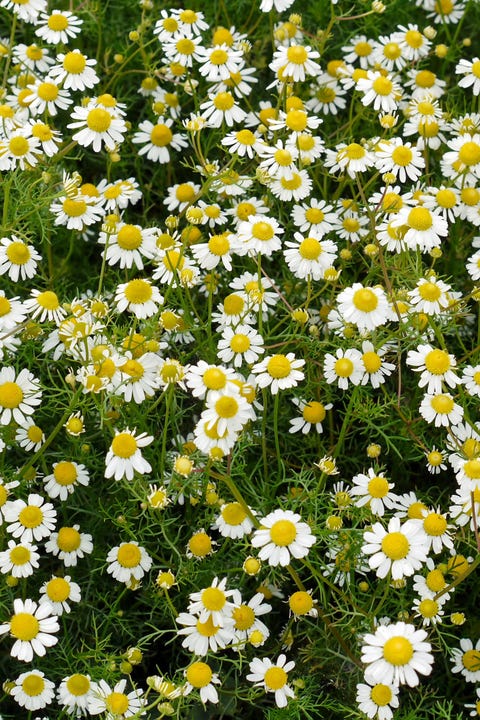
20. Woolly Thyme
The herb Thymus pseudolanuginosus, also called mother of thyme grows into a sturdy, scented carpet of fuzzy gray-green leaves that becomes dotted with miniature light-pink flowers each summer.
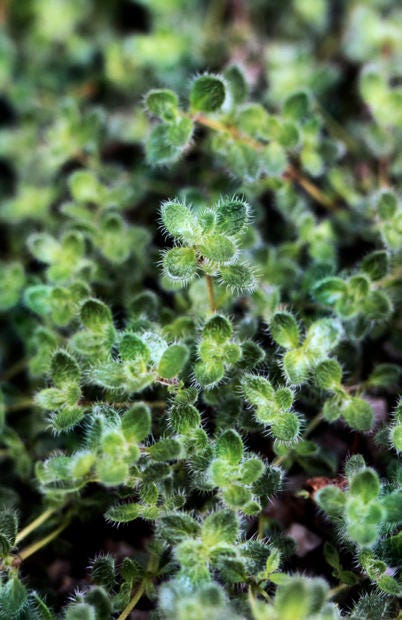
21. Wild Thyme
Also known as Breckland Thyme, this low-growing plant is great for walkways, as it tolerates pedestrian traffic and the leaves, when disturbed, release herbal or lemon scents.
